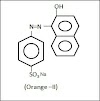galvanic cell - voltaic cell - denial cell or
electrochemical cell.
In 1780 , Alessandro Volta and
in 1800 Luigi Galvani was
invent a galvanic cell or voltaic cell, volta has give a voltaic pile and after
that both volta and galvani respectively derive electrical energy from
spontaneous redox chemical reaction .basically the galvanic cell or voltaic
cell is a electrochemical cell, which produces the electric energy from
chemicals or we can say spontaneous chemical reactions .
#alessandro volta :[wikipedia]
Alessandro Giuseppe Antonio anastasio volta was a Italian chemist
and physicist.
Born : 18th February 1745 [18/2/1745]
Death :
5th
march 1827 [5/3/1827]
Nationality
: Italian
Picture :
Volta was a prove that the electricity generated chemically.
Also volta was known for the inventor of electric battery and methan and also
known for inventor of the voltaic pile.
#Luigi galvani :[wikipedia]
Luigi galvani was a Italian physician , biologist and
philosopher.
Born: 9th
September 1737 [9/9/1737]
Died : 4th
December 1798 [04/12/1798]
Picture :
Luigi galvani is a
known for discovery of bioelectricity or animal electricity .
Daniel's name also comes up when we study electrochemical
cells. So here given information is about denial and which type of relation
between electrochemical cell .
Basically the denial cell and galvanic cell both are same ,
both the cells are basically electrochemical cell , but there is a minor difference
between galvanic and denial cell .
The difference is given below
|
Galvanic cell |
Daniell cell |
|
In galvanic cell various types of electrodes
like metal electrode, non-metal electrode and also carbon or graphite
electrodes are used . |
In denial cell only cu and zn electrodes are
used . |
#
daniell [John
Frederic Daniell][wikipedia]
John
Frederic Daniell , was a English chemist and physicist , they known for inventor
of daniell cell.
Born : 12 march 1790 [12/03/1790]
Died : 13 march 1845 [13/03/1845]
Nationality: english
picture :
why it is called electrochemical cell ?
it is called
electrochemical cell because here the electricity is produced from chemical
reactions or we can say spontaneous chemical reactions.
So we can say that ,
“The device which
converts chemical energy into the electric energy is called as electrochemical cell”.
# BASIC STRUCTURE OF ELECTROCHEICAL CELL OR GALVANIC CELL OR VOLTAIC
CELL OR DAINELL CELL.
The basic structure of galvanic cell is given below.
We can easily prepare
it at our lab, so here primary requirements are given.
Requirements:
Two containers or
beaker,
Zn strip, [used as a
electrode]
Cu strip, [used as a
electrode]
Thin copper wire,
Galvano meter,
1m (molar) CuSO4
solution,
1m(molar) ZnSO4 solution,
Salt bridge [Note: preparation of salt bridge is
given below]
Take two container and
give them name container A and container B.
then take ZnSO4 solution into container A and dip weighted Zn
strip or rod.
in other container B,
fill with the solution of CuSO4 and dip pre-weighted Cu strip or
rod.
Then connect two
electrodes through the galvano meter with the help of thin copper wire. When we
connect two electrodes electron flow will becomes and this is measured by the
galvano meter. Also galvano meter is indicate the real value of current in
volt. Also we have to make connection of two container with the help of salt
bridge. remember that electron flow is from anode to cathode. Oxidation will
always becomes on anode that is way we can say that “the electrode at which
oxidation will takes place is called anode”. And reduction will always becomes
on cathode that is way we can say that “the electrode at which reduction will
takes place is called cathode”. In our case electron flows from zn electrode to
cu electrode. Sign for denote anode is (-) and sign for denote cathode is (+).
So the oxidation on
anode and reduction on cathode and complete cell reaction is given below.
After allowing for
some time to run reactions , both the electrodes are taken out from containers
and washed carefully and weighted after drying , we can observed that the weight of Zn strip
has decreased and weight of Cu strip is increased . it has becomes due to the
above redox reaction.
Salt bridge:
Structure of salt-bridge:
basically salt-bridge
is a U-shaped glass tube.
The main components
which are filled in the glass tube(salt-bridge) is agar-agar gel+ electrolytes
+ water.
Electrolytes: NH4NO3
(K2SO4 , KNO3 , KCl , NH4Cl.)
How to make salt-bridge ?
Requirements:
Container or beaker,
U-shaped glass tube,
Heat source,
Electrolytes: NH4NO3
(K2SO4 , KNO3 , KCl , NH4Cl.)
(measured),
Agar-agar gel
(measured),
Water (measured).
Making Process:
Take one beaker and
add measured agar-agar gel, electrolytes, and water.
Keep the solution on
heat source and give heat at least about 20-25 minutes.
After 20 minutes
dismantle the solution and keep it for cooling ,it will becomes hemi-solid ,
this hemi-solid material is our main and required material.
After that add this material
into the taken U-shaped glass tube, pack both the sides of glass tube with the
help of cotton plugs,
Our salt-bridge is
ready to use, salt-bridge is dipped in such a way that “two ends of salt bridge
is dipped into the both solutions”.
Function of salt-bridge:
The main function of
salt-bridge is , to keep both the solutions electrically neutral and,
Second thing is
salt-bridge is helps to connect both the solutions of half cell.
Salt-bridge is allows
the movement of ions from one solution to the other solution without mixing of
two solutions.
During the redox
reaction ions are move through the salt-bridge, in denial cell SO4-
is moves from container B to container A and keep both the solution
electrically neutral.
[અસ્તુ:]












![TNT[trinitrotoluene]-2,4,6-trinitrotoluene-IUPAC,structure,chemical properties,physical properties,history,synthesis,uses,toxicity-by study everything.](https://blogger.googleusercontent.com/img/b/R29vZ2xl/AVvXsEguQhJ8XKR-lzjmdZ6Tb3GnTgrK2_vDyw5KAoxMAzKEMFpBqkRJwr0V8iGVwxRNsBXGDKcm1ChoNLkrXlMrPvtTEtw9I5eH2vBMQ3BRxPFkQ_n8Vf9XMZF3H9nFgYtuiVj1T0yOsZl27HD2WRWxsCy1P1_IM262s_zR3OPzDy_5JrBM3UxZhPKe_XK61w/w100/classification%20of%20explosives..JPG)
![ATENOLOL [TENORMIN] - medicinal drug -study everything.](https://blogger.googleusercontent.com/img/b/R29vZ2xl/AVvXsEgGTsBGKNaP_tE51nfYj2h3fKdZpO02gO5BeGfItb45xXsb4Gs_pu7ojGb8kc5WTo3e8qZHTxUwGLRwVrpBxzY-Bld1uR2rsmHRYEj3fX0uV4dEYiMa_46l17eSkXpgPnWb3pgGvDGvkqBU/w100/structural+formula+atenolol.PNG)

0 Comments
please do not enter any spam link in the comment box.